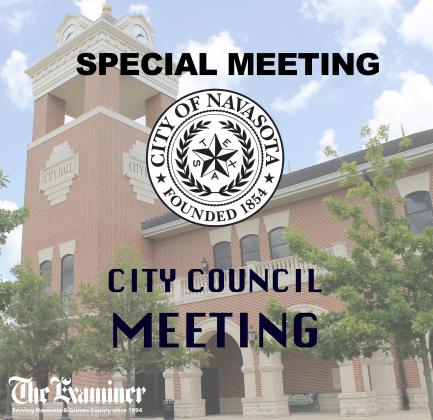City studies TIRZ as tool to tackle growth
The Navasota City Council held a Special Meeting Monday, June 27, and heard a presentation from David Hawes of Hawes Hill and Associates LLP regarding Tax Increment Reinvestment Zones (TIRZs) also known as Tax Increment Financing (TIFs), Public Improvement Districts (PIDs) and Municipal Utility Districts (MUDs). The 90-minute presentation gave council members a lot to ponder as they and city staff plan for growth and respond to requests from devel opers in Navasota’s ETJ (extraterritorial jurisdiction) seeking annexation. Council members Bernie Gessner and Grant Holt were absent.
Clarifying common misconceptions about TIRZs, political subdivisions governed by Chapter 311 of the Texas Government Code, Hawes said that TIRZs are not tax increases or tax abatements and they do not provide tax breaks for property owners.
Hawes said, “TIRZs are economic development tools created and regulated by the city. The purpose of a TIRZ is strictly for infrastructure financing, not for maintenance of something that you’ve done, but for financing. The public infrastructure then promotes economic development. The legislature in its infinite wisdom leaves it to the city councils, the governing bodies, to define what those conditions are.”
According to Hawes, the amount of participation by the City and the parameters for each TIRZ project are required to be spelled out in a City ordinance. The ordinance could require developers to build parks, sidewalks and be specific about plant landscaping and building materials.
A part of the 8-step TIRZ process includes public hearings to receive feedback from interested parties about areas considered for designation as a TIRZ as well as the establishment of a governing board.
How do TIRZs work?
When a TIRZ is created, the City records the base tax value of the properties in the TIRZ at the time of creation. As development occurs and values increase, property taxes collected above the base tax value go directly to the TIRZ fund.
The City can choose its degree of participation. For example, the City can choose to pay the developer for the required amenities with 50% of the TIRZ funds and the remaining 50% is used for infrastructure needs within that particular TIRZ. In short, it allows reinvestment of funds in the area which created the funds.
PIDs and MUDs
Moving on to PIDs and MUDs, Hawes indicated that MUDs have fallen out of favor and it was not something he recommended, particularly for cities the size of Navasota. Suggested instead were PIDs, governed by Chapter 372 of the Texas Government Code. While MUDs are created by the state Legislature, PIDs are created by city resolution.
According to another source, Texas National Title Company (TNT), PIDs as designated areas where property owners pay a special assessment for improvements and services within that area which are supplemental to services provided by the city. They’re used for temporary infrastructure improvements such as parks, lighting and road improvements.
TNT noted that HB 1543 signed into legislation September 2021 requires the same disclosures for PIDs at time of a property closing as are required for MUDs.
One-way alleys discussed
Following the request by the P.A. Smith Hotel and Rail & Rye Restaurant to make the alleyway behind their businesses oneway northbound, the City received a request from 4141 Coffeehouse to make the alleyway which serves its drive-thru window oneway westbound.
This was not an action item and following discussion about multiple alleyways in the downtown area, the consensus among council members was that each request be taken on a case by case basis.
View city council meetings in their entirety at www.navasotatx.gov/city-council/pages/meeting-videos.

